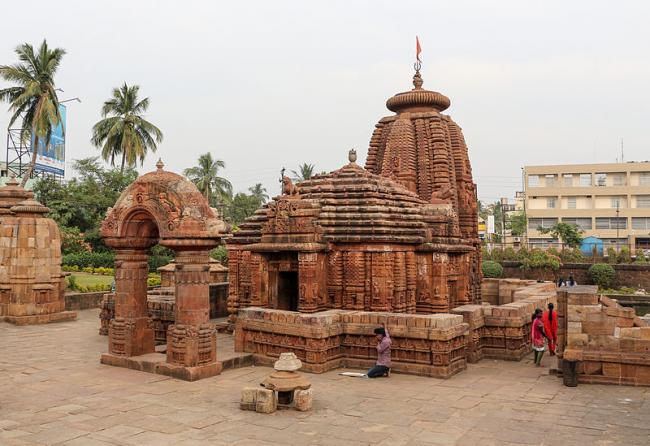
Odisha: Declining Threat
On January 5, 2019, Communist Party of India-Maoist (CPI-Maoist) cadres shot dead a guard of a road construction firm at Patiamba village under Phulbani Sadar Police Station limits in Kandhamal District, suspecting him of being a ‘Police informer’. Superintendent of Police (SP), Prateek Singh disclosed that a group of 10 to 12 armed cadres of the CPI-Maoist ‘Kalahandi-Kandhamal-Boudh-Nayagarh (KKBN) division’, raided the road construction camp where contractor Prasanna Kumar Swain was building the Sudrukumpa-Medikhol Road under the Pradhan Mantri Gram Sadak Yojana (PMGSY) scheme. The rebels barged into the camp at around 2 am, dragged out watchman Rabindra Mallick and shot him dead. They then set ablaze five vehicles, including a road roller, three tractors, and a mini truck, before fleeing. Before leaving the area, the Maoists also put up two handwritten leaflets near the site. The leaflets mentioned that the attack was in retaliation to the killing of Badal, the ‘divisional committee member, (DCM)’ with a reward of INR 500,000 on his head and four others, in the District on May 13, 2018.
Later, on January 15, 2019, Police arrested seven CPI-Maoist cadres, two from Madikula and five from Tikiripada village under Phulbani Sadar Police Station limits in Kandhamal District, for their involvement in the killing.
No other incident of Left-wing Extremism (LWE)-linked violence has been recorded in the State, thus far, in 2019 (data till January 20, 2019).
Meanwhile, the trend of declining fatalities, on year on year basis, in LWE-linked violence established since 2011, with the exception in 2016, continued through 2018. According to partial data collated by the South Asia Terrorism Portal (SATP), at least 32 persons, including 13 civilians, one Security Force (SF) trooper, and 18 Maoists, were killed in the State in 2018, as against 36 persons, including 18 civilians, nine SF personnel and nine Maoists, killed in 2017. Significantly, at its peak in 2009, the State had recorded a total of 108 fatalities.
More importantly, Odisha registered a decline of 27.77 percent in civilian fatalities, from 18 in 2017 to 13 in 2018. Fatalities recorded in this category in 2018, on year on year basis, were the fourth lowest since the formation of CPI-Maoist in September 2004. The lowest number (three fatalities) was recorded in 2006, while the second lowest (13) was recorded twice, in 2005 and 2007. Significantly, the highest number of civilian fatalities (62) was registered in 2010.
Fatalities among SFs decreased from nine in 2017 to just a single fatality in 2018, which is the lowest since the formation of CPI-Maoist in September 2004. One SF fatality each was registered in 2005 and 2014 as well. A total of 76 SF personnel were killed in 2008, the maximum in a year.
SFs achieved their best ever kill ratio against the Maoists (1:18) in 2018, since the formation of the CPI-Maoist in 2004, with 18 Maoists killed for just a single SF loss. In 2017, the ratio was 1:1 (nine SF personnel; nine Maoists). The overall kill ratio since 2005 stands at 1:1.26. Out of 14 years between 2005 and 2018, the ratio was in favour of SFs in 11 years. However, in 2009, the SFs lost 32 of their own personnel, killing 13 Maoists yielding an adverse kill ratio of 2.46:1. The other two adverse kill ratio of 2.37:1 and 1.35:1 were registered in 2008 and 2012 respectively.
SFs arrested 38 Naxalites (Left Wing Extremists) through 2018 in addition to 49 in 2017. The arrested cadres included one ‘area committee member (ACM)’ and one ‘politburo member’ of the Communist Party of India-Marxist Leninist-Red Star (CPI-ML-Red Star).
Moreover, mounting SF pressure also led to the surrender of 18 LWEs in 2018, in addition to 49 surrenders in 2017. The cadres who surrendered in 2018 included Kunu Dehury, ‘Divisional Committee Secretary,’ carrying a reward of INR 800,000 on his head, in the Sambalpur District on April 14, 2018; Dayanand aka Chhotu Ganjhu (28), ‘section commander’ in the CPI-Maoist ‘Sambalpur-Deogarh-Sundargarh Division’, carrying a reward of INR 400,000 on his head, in Angul District on April 17, 2018; and Mukesh, an ‘area committee member’ (ACM), of the ‘Kalimela Dalam (armed squad)’,in Malkangiri District on July 29, 2018.
At least 17 incidents of recovery of arms and ammunition by SF personnel were reported in 2018. There were 31 such instances of recovery in 2017.
The Maoists carried out five blasts in 2018 as against six in 2017. They had been involved in eight incidents of arson in 2018 as against 13 in 2017. Further, at least four incidents of abduction (in which 14 persons were abducted of which one person was killed and others were let off after ‘warnings’) by the Maoists were reported in 2018 as against nine such incidents (in which 25 persons were abducted of which four persons were killed and others were released after ‘warnings’) in 2017.
However, several areas of concern remain.
In 2018, according to the SATP database, killings were reported from 10 Districts, as against seven in 2017. The 10 Districts in 2018,from where killings were reported included: Malkangiri (10 fatalities, six civilians and eight Maoists); Kandhamal (five, all Maoists); Koraput (three, all Maoists); Nabarangpur (three, all civilians); Bolangir (two, both Maoists); Bargarh (one civilian); Kalahandi (one civilian); Nuapada (one civilian); Rayagada (one, SF trooper); and Sundargarh (one, civilian). The seven Districts where fatalities were recorded in 2017 included Malkangiri (14, 12 civilians and two Maoists); Koraput (11, two civilians, eight SF personnel and one Maoist); Kalahandi (three, two civilians and one Maoist); Kandhamal (three, one civilian, one SF trooper and one Maoist); Bargarh (two Maoists); Sundargarh (two Maoists); and Rayagada (one civilian).
According to the SATP database, in terms of underground and over-ground LWE activities, two of Odisha’s 30 Districts remained in the category of ‘highly-affected’ Districts: Kandhamal and Malkangiri. Bargarh, Bolangir, Kalahandi, Koraput, Nabarangpur, Nuapada, Rayagada and Sundargarh were ‘moderately affected’, while Angul, Boudh, Gajapati, Nayagarh, and Sambalpur, remained ‘marginally affected’. In 2017, three Districts were in the ‘highly-affected’ category: Kandhamal, Koraput, and Malkangiri. Bargarh, Kalahandi, Rayagada, and Sundargarh were ‘moderately affected’, whileBolangir and Nayagarh were ‘marginally affected’Districts. The number of affected Districts thus rose from nine to 15 between 2017 and 2018.
Significantly, on April 16, 2018, the Union Ministry of Home Affairs (UMHA) disclosed that at least 30 Districts across seven States were categorised as ‘worst Maoist-affected’.Two of these Districts, Koraput and Malkangiri fell in Odisha. On April 16, 2018, UMHA also disclosed that the number of Maoist-affected Districts covered under the Security Related Expenditure Scheme (SRE) had decreased from 126 in 10 States to 90 in 11 States.15 of these 90 Districts were in Odisha. In addition to the two worst-affected Districts mentioned, the other 13 Districts were Angul, Bargarh, Bolangir, Boudh, Deogarh, Kalahandi, Kandhamal, Nabarangpur, Nayagarh, Nuapada, Rayagada, Sambalpur and Sundargarh.
In addition to CPI-Maoist, the People’s Liberation Front of India (PLFI), a CPI-Maoist splinter group mainly based in Jharkhand, also continues to make its presence felt in Odisha. On March 6, 2018, PLFI cadres killed a civilian identified as Haridarshan Sahu, a paddy trader, at Bagdega Square under Bisra Police Station limits in Sundargarh District. On January 17, 2018, Police arrested an active PLFI cadre identified as Kale Dhanwar aka Lal Babu, from Biramitrapur Police Station limits in Sundargarh District.
According to January 6, 2019, report, a total of 16 battalions of Central Armed Police Forces (CAPFs), 41 anti-Maoist Special Operation Group (SOG) teams if the State Police, 848 District Voluntary Force (DVF) troopers, 56 platoons of the India Reserve Battalions, 74 platoons of the State Security Battalion, and 18 platoons of the Odisha Special Striking Force, have been deployed to fight the Naxalites. The State, meanwhile, continues to face a deficit in its Police strength. According to Bureau of Police Research and Development (BPR&D) data, the State had a Police-population ratio (Policemen per hundred thousand population), as on January 1, 2017, of 132.87, significantly lower than the sanctioned strength of 229.19, as well as than the national average of 150.75. The ratio was 130.95 per 100,000 on January 1, 2016. On January 1, 2005, the Police-population ratio of the State was 101.5, again, significantly lower than the then national average of 140.4. These numbers are, likely, significantly exaggerated. According to the National Crime Records Bureau (NCRB), which was earlier charged with compiling data on Police organisations in the country, as on December 31, 2004, the Police-population ratio in Odisha was 92, significantly lower than the then national average of 123.
In addition to several measures taken in past years, the State Government through 2018 launched some new initiatives on the security front. Most importantly, according to a September 24, 2018 report, the Odisha Police has decided to use drone cameras for the surveillance of Naxal activities in LWE-affected areas of the State, specifically the highly affected Malkangiri and Koraput Districts. Director General of Police (DGP) Rajendra Prasad Sharma, on September 23, 2018, thus disclosed, "We will buy some drones in this financial year. The first drone that we are buying will be used for surveillance of severely Naxal-affected Districts to augment security."
Similarly, on July 27, 2018, the Union Government decided to add Angul and Boudh in the list of LWE-affected Districts in order to launch pre-emptive and forward-looking steps to tackle the Maoist rebels.
On the developmental front, State Chief Minister Naveen Patnaik inaugurated the Gurupriya Bridge in Malkangiri District on July 26, 2018. The bridge links the State’s mainland to the erstwhile ‘cut-off area’ of 151 villages and nine Gram Panchayats (village level local self-Government institutions) that were severed when the Machhkund Reservoir was constructed in 1960 and later, the Balimela Hydro Power Project came up in 1972. On the occasion, Patnaik announced a Special Package of INR One billion for the District, but particularly targeting people in the ‘cut off area’. The Package aims at expediting the developmental agenda, including expanding road connectivity, electrification, drinking water supply, healthcare, bridges and fishery.
With the Maoist threat in the State declining, a greater focus on developmental consolidation is necessary, even as the SFs remain alert to any potential rebel resurgence or spill-over from affected areas of neighbouring States, where the Maoists are also coming under pressure.
Support Our Journalism
We cannot do without you.. your contribution supports unbiased journalism
IBNS is not driven by any ism- not wokeism, not racism, not skewed secularism, not hyper right-wing or left liberal ideals, nor by any hardline religious beliefs or hyper nationalism. We want to serve you good old objective news, as they are. We do not judge or preach. We let people decide for themselves. We only try to present factual and well-sourced news.







